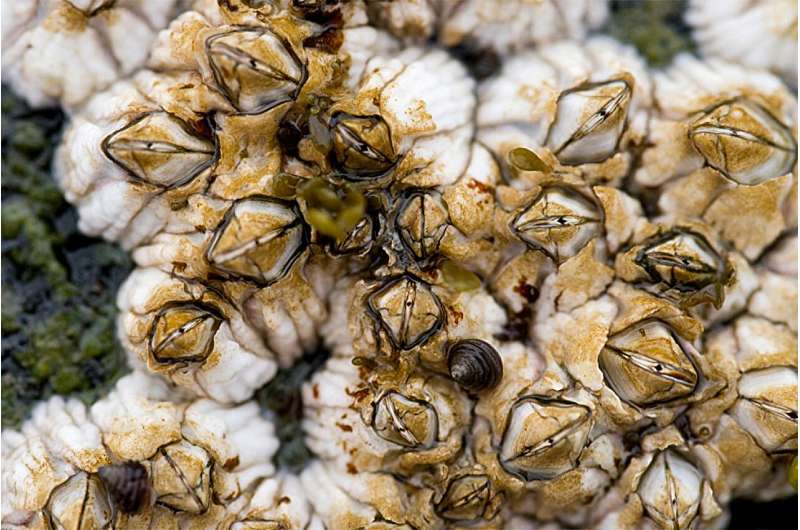Researchers have discovered that polymers inspired by the adhesive properties of barnacles could provide a new way to combat bacterial biofilms and antibiotic-resistant infections. This innovative approach focuses on disrupting the structure of biofilms, rather than directly killing the bacteria, offering a promising alternative to traditional antibiotics. Biofilms are a major challenge in medical and industrial settings, and this research could lead to new strategies for addressing this problem.

Harnessing Barnacle Secrets for Antibiotics
The inspiration for this research comes from the natural world, specifically the way barnacles cling to rocks at the seashore. Scientists have discovered that these marine creatures use naturally occurring chemicals to clear rock surfaces of bacteria, preparing the way for them to lay down their sticky “glue.”
Professor Abraham Joy and his team at Northeastern University wondered if they could use this idea to design a synthetic polymer that could mimic the bacteria-clearing properties of the barnacle’s natural chemicals. By doing so, they hoped to create a new way to address bacterial biofilms, which are a major challenge in medical and industrial settings.
Disrupting Biofilms: A Novel Antibiotic Approach
The researchers found that the synthetic polymer they had already developed, which adheres well to wet surfaces, was able to effectively remove biofilms containing the bacteria Pseudomonas aeruginosa, a common cause of antibiotic-resistant infections.
“We were surprised it works very well,” says Joy, now the chair of Northeastern University’s Department of Bioengineering. The key is that the polymer disrupts the structure of the biofilm, rather than directly killing the bacteria. “Think of biofilm as a house and bacteria as people inside a house. We’re not doing anything to the people in the house. We’re just working with the exoskeleton or the scaffolding or structure of the housing. We’re just making that housing weaker.”
This approach is particularly promising because bacteria within biofilms can be dormant and less responsive to traditional antibiotics, which are designed to target actively growing bacteria.
Tailoring Polymers for Specific Bacterial Biofilms
While the polymer was effective against Pseudomonas aeruginosa biofilms, it was less successful in removing biofilms containing Staphylococcus and E. coli. This is likely due to the different compositions of these biofilms, with the former containing more carbohydrates and the latter being more protein-based.
“What we’re trying to do now is to understand the mechanism of how exactly this works,” says Joy. “Can we change the polymer composition a little bit? Can we design polymers that are specific for Staph aureus biofilms?” The goal is to develop a “powerful tool” that can be tailored to address a wide range of bacterial biofilm scenarios.
As the researchers continue to explore the physical and chemical properties of these polymers, they hope to expand the potential applications beyond just medical settings. “There could also be industrial applications for clearing bacterial contamination out of pipes and medical devices,” says Joy.
